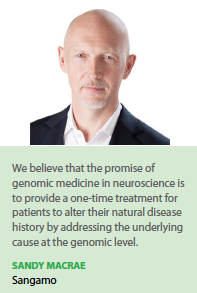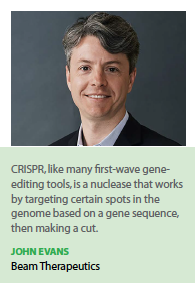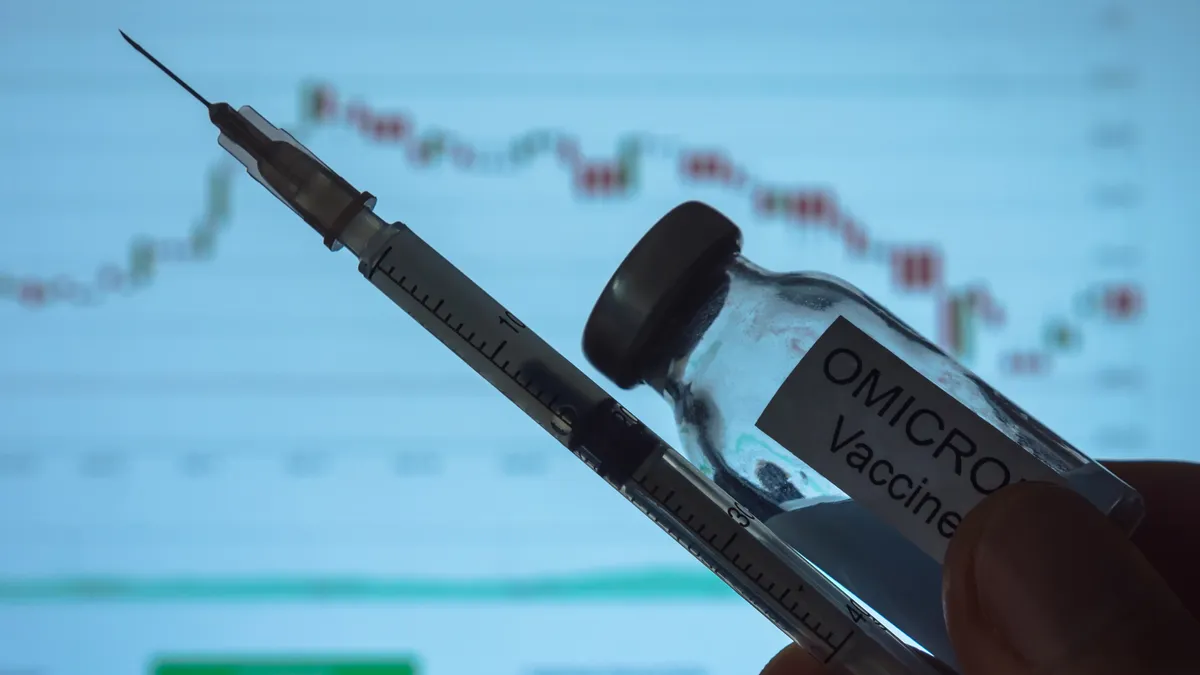Genomic editing has truly come of age. In the past few years, the technology has moved from the laboratory to the clinic, with companies beginning to conduct in vivo studies of the technology in various disease states.
 The gene editing field reached a milestone in March 2020 when for the first time a medicine derived from CRISPR (clustered regularly interspaced short palindromic repeats) genome editing was administered inside a patient’s body. That patient was the first participant in the BRILLIANCE Phase I/II clinical trial of drug candidate AGN-151587, co-sponsored by global pharmaceutical company Allergan and genome editing company Editas Medicine.
The gene editing field reached a milestone in March 2020 when for the first time a medicine derived from CRISPR (clustered regularly interspaced short palindromic repeats) genome editing was administered inside a patient’s body. That patient was the first participant in the BRILLIANCE Phase I/II clinical trial of drug candidate AGN-151587, co-sponsored by global pharmaceutical company Allergan and genome editing company Editas Medicine.
AGN-151587, delivered via sub-retinal injection, is under development for the treatment of Leber congenital amaurosis 10 (LCA10), an inherited form of blindness caused by mutations in the centrosomal protein 290 gene. The trial is assessing the safety, tolerability, and efficacy of the medicine in 18 patients with LCA10.
“This dosing is a truly historic event — for science, for medicine, and most importantly for people living with this eye disease," says Cynthia Collins, president and CEO, Editas Medicine. She adds that the trial “marks a significant milestone toward delivering on the promise and potential of CRISPR medicines to durably treat devastating diseases."
Gene editing technologies such as CRISPR allow scientists to change the DNA of an organism. Using these technologies, genetic material can be added, removed, altered, or replaced at specific locations in the genome. These modifications can lead to changes in physical traits like eye color, as well as changes to disease risk.
While several approaches to gene editing have been developed since the late 1900s, it’s the CRISPR technology that has propelled the science forward. Created in 2009, CRISPR has simplified the process of gene editing and made it faster, cheaper, and more accurate.
John Evans, CEO of gene editing firm Beam Therapeutics, says that CRISPR, like many first-wave gene editing tools, is a nuclease that works by targeting certain spots in the genome based on a gene sequence, then making a cut. Before CRISPR, he says, each time a scientist wanted to target a different gene sequence, they had to completely re-engineer the gene-editing tool.
“In the case of technology like zinc fingers or talons, the part that recognizes the gene sequence you want to target is protein," Mr. Evans says. “And those different-shaped proteins are very cumbersome to re-engineer if you want to make a customized editor for a given sequence."
But with CRISPR, he notes, “it’s the same protein every time, and it can be re-targeted to new sequences simply by changing out the guide RNA. This short nucleic acid sequence loads into the CRISPR protein, and suddenly you have an entirely new product that’ll target a new sequence. And I think that flexibility has been really powerful."
However, CRISPR isn’t without risks. Because CRISPR involves the breaking of the double strands in DNA, it can result in unwanted DNA insertions, deletions, and rearrangements.
To address those risks, a team headed by David Liu, Ph.D., professor at Broad Institute and Harvard University and co-founder of Beam, created a gene editing tool known as base editing. Where CRISPR technology has been compared with scissors snipping out bits of genetic code, base editing technology can be used to make precise and efficient changes to single base pairs without breaking the double strands in DNA.
 Mr. Evans says while base editing uses CRISPR’s targeting technology, it changes the CRISPR protein so that it doesn’t make the double-stranded break. “Instead, we’ve added this extra domain called a deaminase, a naturally occurring chemical enzyme that can make a precise single-base change at that location without cutting the DNA," he adds.
Mr. Evans says while base editing uses CRISPR’s targeting technology, it changes the CRISPR protein so that it doesn’t make the double-stranded break. “Instead, we’ve added this extra domain called a deaminase, a naturally occurring chemical enzyme that can make a precise single-base change at that location without cutting the DNA," he adds.
Beam’s base editing technique is focused on point mutations, the most common kind of mutation in genetic disease, Evans says. The company presently is conducting preclinical studies of its base editing technology addressing beta-thalassemia and sickle cell disease, debilitating non-malignant blood disorders that lack effective, disease-modifying treatments.
At a conference in December 2019, Beam offered the first in vivo proof of concept for long-term engraftment of base-edited CD34 cells. Giuseppe Ciaramella, Ph.D., Beam’s chief scientific officer, says that “using base editors to precisely recreate these naturally occurring genetic variants will enable the best possible outcomes for patients suffering from severe hemoglobinopathies."
Beam is using base editors to directly convert the sickle cell disease-causing point mutation into a naturally occurring variant that’s asymptomatic. This hemoglobin variant has been observed in individuals who do not have polymerization — also known as sickling — and are otherwise asymptomatic. Beam has demonstrated that its base editor variants can reach up to 70% direct correction of the sickle hemoglobin in sickle cell disease patient-derived fibroblasts. Mr. Evans states that Beam is also developing CAR-T cell therapy for use in treating cancer, with initial focus on pediatric leukemias.
Beam has made progress in the evolution of its novel adenine base editor (ABE) and cytosine base editor (CBE) technologies. Nicole Gaudelli, Ph.D., senior scientist and head of DNA editing platform at Beam, has used a bacterial selection strategy to identify ABEs with enhanced properties in mammalian cells. These proprietary variants show increased therapeutic potential and on-target activity while maintaining undetectable levels of off-target editing.
Further, a team led by Dr. Liu has outlined novel variants of base editors able to bind to a wider range of genetic targets, expanding their therapeutic potential. These base editors feature modifications that allow them to bind to different “PAM" sequences in the genome.  PAM sequences are short sequences of DNA bases that define where the targeting domain of the base editor can bind. The newly developed variants could potentially target up to 95% of all point mutations correctable with base editors and have been shown to be compatible with both ABEs and CBEs.
PAM sequences are short sequences of DNA bases that define where the targeting domain of the base editor can bind. The newly developed variants could potentially target up to 95% of all point mutations correctable with base editors and have been shown to be compatible with both ABEs and CBEs.
Prime Editing
An even newer CRISPR-derived technology known as prime editing also has emerged from Dr. Liu’s team in recent months. According to Mr. Evans, while prime editing is similar in theme to base editing, it uses a reverse transcriptase in place of the base editor’s deaminase. This reverse transcriptase does a short-range rewriting of DNA, which in theory allows the user to do a large number of edits at once without breaking the DNA’s double strands, Mr. Evans says.
“Prime editing will do more complicated changes," he says. “For instance, if you had a gene where there was a short deletion of several bases in a row, you could theoretically use prime to fill that in and rewrite that sequence."
With base and prime editing, the next wave of gene editing tools has clearly arrived. But first-wave technologies are still extremely valuable. There are plenty of companies employing first-wave gene editing technologies in new and innovative ways.
For instance, biotechnology company Biogen and genomic medicine company Sangamo Therapeutics are working together to leverage Sangamo’s proprietary zinc finger protein technology delivered via adeno-associated virus to modify key genes involved in several neurological diseases. The companies are working together to develop and commercialize drug candidates ST-501 for tauopathies including Alzheimer’s disease and ST-502 for synucleinopathies including Parkinson’s disease, as well as several undisclosed neuromuscular and neurological disease targets.
Sangamo CEO Sandy Macrae says there is an urgency to develop medicines that will actually slow or stop the progression of debilitating diseases like Alzheimer’s and Parkinson’s, rather than simply addressing the symptoms.
“We believe that the promise of genomic medicine in neuroscience is to provide a one-time treatment for patients to alter their natural disease history by addressing the underlying cause at the genomic level," Mr.Macrae says.(PV)



















